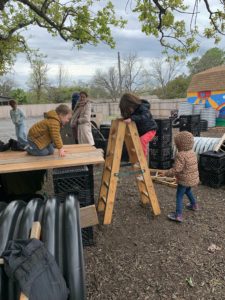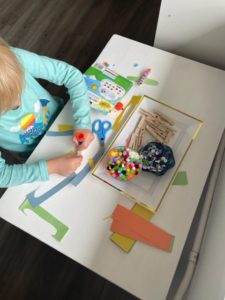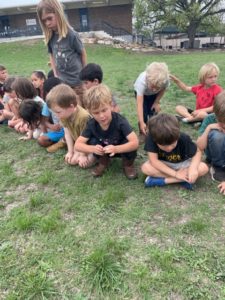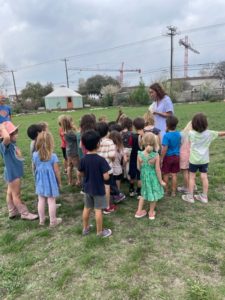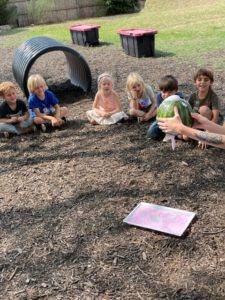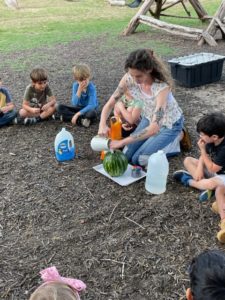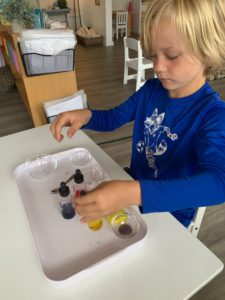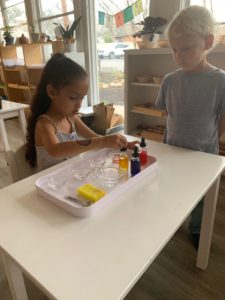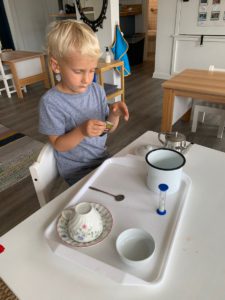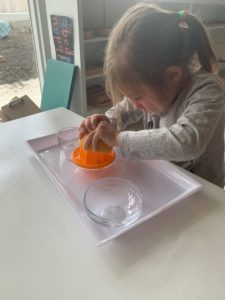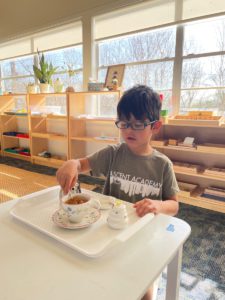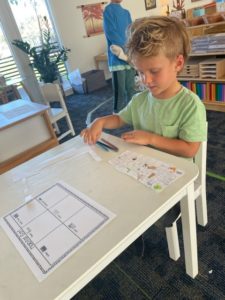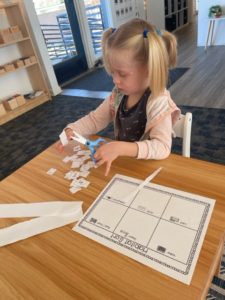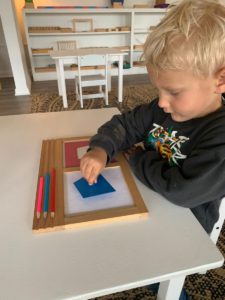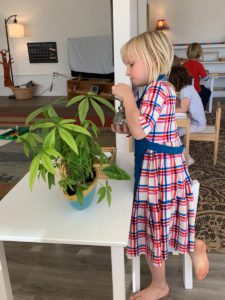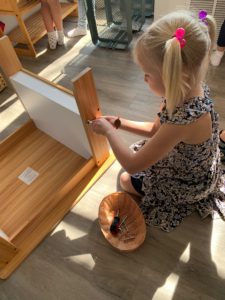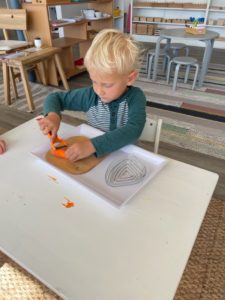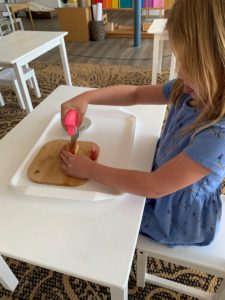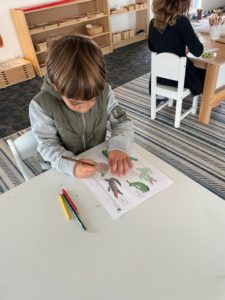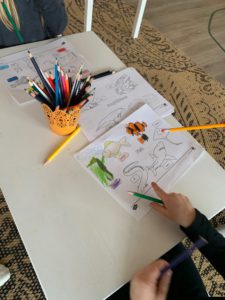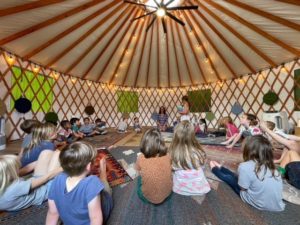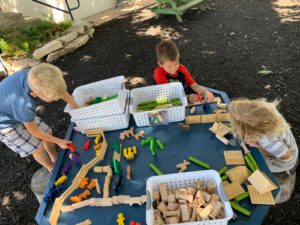Montessori started a shift in education by thinking about movement differently. When observing any Montessori environment you will notice a lot of movement throughout the studio as this is an integral part of the Montessori environment.
When our bodies are in motion, we are connected to the environment around us. Our minds cannot be dormant, because our hands, feet, arms and legs are at play. Movement brings about strength, joy, effort, and a wondering of possibilities. Montessori saw and made the connection that when we move, we engage. Many of the children are naturally drawn to the activities that involve exploring the classroom like Environment Cards, Zero Game, or other memory activities.
Montessori also recognized the disservice of young people being confined to a desk all day to learn. She believed the body needed room to move and grow. Unlike traditional schooling, a Montessori environment gives the child the freedom to move about the space and choose their lessons. This type of movement also allows for spontaneous social interaction to occur with no need for permission from the guide.
Thought requires movement and movement facilitates thinking. This happens by creating a prepared environment in which children are free to explore their own interests. Not only is this type of movement directed and focused on purposeful work, it allows children to expend their energy in productive, concentrated ways. When movement is involved, the brain is stimulated differently than it is when one is passively watching and listening. The brain depends on all types of movement to develop.
“One of the most important practical aspects of our method has been to make the training of the muscles enter into the very life of the children so that it is intimately connected with their daily activities.” – Maria Montessori, Discovery of the Child
Montessori based her method of education on the premise that learning is linked to movement. When a child can engage multiple senses in a learning activity, it builds stronger connections to the brain. Children trace the Sandpaper Letters with their fingers while they learn sounds. When working with Number Rods, the Pink Tower, and Brown Stairs, the child carefully carries the materials, one by one, from shelf to mat, allowing them to observe the subtle differences in weight, size, color and shape. Children discover more about themselves and the larger world by making connections through all of their senses.
Movement applies to the guide as well. The guide moves softly about the room, quietly among the students, not to disrupt or dictate the work, but to carefully observe and to trust the environment is prepared exactly as the children need it. The guide also aims to connecting themselves to the environment and this creates a space for a shared trust and a fluidity between the guide and the child.
“It is high time that movement came to be regarded from a new point of view in educational theory.” – Maria Montessori, The Absorbent Mind



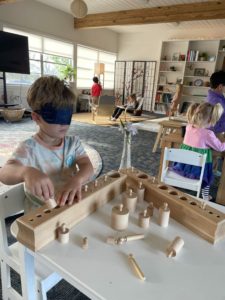
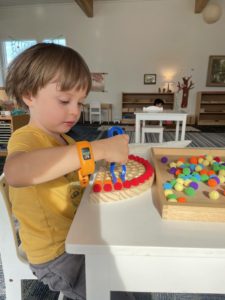

 .
. 